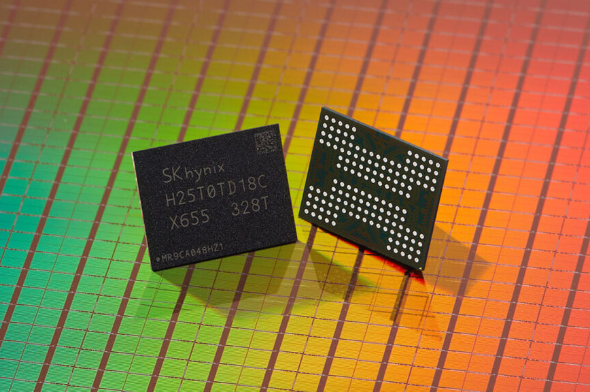Connection to DriversCloud Create a DriversCloud.com account Reset your DriversCloud.com password Account migration
321-layer flash memory from SK Hynix
Used in smarpthones as much as in USB sticks or SSDs, NAND is gaining in complexity.
Conceived by Toshiba in 1989, NAND is a cheaper alternative to NOR flash memory, which was originally more efficient, but more expensive and therefore capable of lower density. Density is precisely what this presentation at the Flash Memory Summit 2023 in Santa Clara, California, is all about. South Korea's SK Hynix backtracked on its March announcement that it had produced its first 321-layer NAND chips.
Today, it's no longer a question of promises or announcements, but of a formal presentation of NAND. In the past, NAND was a flash memory available in 32 layers, for example. We soon moved on to 64, then 96 and even 112 layers, before 176-layer chips became the norm for a relatively long period. Since then, it's up to the manufacturer to go further and faster, with Micron, for example, currently offering 232-layer NAND on its flash memory chips for SSDs and smartphones. SK Hynix has now succeeded in raising the bar even higher, by producing its chips in 321 layers. The company made its presentation with 1 Tb (128 GB) memory in 321 layers, which it "put in front" of previous generation chips, 512 Gb (64 GB) memory in 238 layers .SK Hynix still refers to TLC ( triple level cell ) memory, but points out that this technology offers " a 59% improvement in productivity ".
While NAND components - like other semiconductors - are designed from wafers, increasing the number of layers in this way obviously boosts the density of these storage components, thereby reducing production costs. These costs are all the more critical as storage capacity requirements have exploded in recent months on our smartphones and SSDs. Even more importantly, the world of artificial intelligence is proving to be particularly greedy for NAND capacity. As Jungdal Choi, head of NAND development at SK Hynix points out, " with the timely introduction of high-performance, high-capacity NAND, we will strive to meet the demands of the AI era and continue to lead innovation ".






